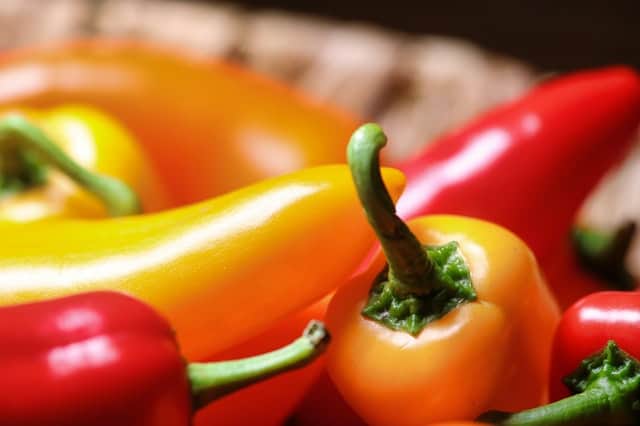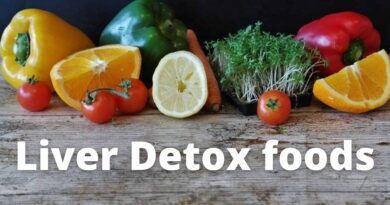10 Benefits of Chilli Pepper
Chilli Pepper is a well-known vegetable. The most famous peppers are the yellow, green and red peppers. It is certain that the peppers are healthy. They have a lot of advantages that most people are not yet aware of. In this article, we will look at the 10 benefits of chilli peppers.
Peppers are native to the tropical regions of Central and South America. From Mexico to Peru, the ancient Indians domesticated the crop in different regions, which had been used as cooking food since 7500 D.D.
Pepper features:
Chilli peppers are annual herbs. Fruits are usually conical, facing the sky or downwards, green when immature, and turned to bright red, yellow, or purple when ripe, most commonly in red. Seeds kidney-shaped, pale yellow, beads bent. The fruit of chilli peppers is spicy because the peel contains capsaicin which is very healthy for the body.
Red peppers are rich in vitamin C and carotene. However, the content of these two vitamins in yellow peppers and especially green peppers (basically immature fruits) are relatively low. In addition, chilli peppers are rich in a variety of vitamin B (especially vitamin B6), as well as potassium, magnesium and iron and other essential trace elements of the human body. High levels of vitamin C in chilli peppers also contribute to the absorption of iron from foods such as legumes and grains.
Not all chilli plants have a spicy taste, such as green peppers and bell peppers are without spicy flavour. The spiciness of chilli peppers is measured by the Scoville Heat index, and in 2007 India’s Naga Jolokia reached 1,041,427 Scoville units, considered the world’s hottest pepper, and is included in the Guinness Book of World Records.
10 Benefits of Chilli Pepper
When the spicy taste of chili peppers stimulates the nerve endings of the tongue and mouth, the brain immediately commands the whole body to “be alert”: an accelerated heartbeat, increased secretion of saliva or sweat, double the “work” of the stomach, and release endorphins. If you take another bite, the brain will think there is pain, releasing more endorphins. The constant release of endorphins make people feel relaxed and excited, resulting in a spicy “pleasure.” Another factor in chilli is the role of capsaicin which is very useful for the body.
Prevents Gallstones
Chilli peppers have a stimulating effect on the mouth and gastrointestinal tract, can enhance gastrointestinal peristaltic, promote digestive secretion, improve appetite, and can inhibit abnormal fermentation in the intestines. Eating green peppers often prevents gallstones. Green pepper is rich in vitamins, especially vitamin C, which can make excess cholesterol into bile acid in the body, thereby preventing gallstones.
Healthy weight loss
More and more people are overweight and find it difficult to lose weight. however, weight loss does not have to be difficult. Losing weight can be very easy. To do this, you only need to make a few changes in your lifestyle and pay close attention to your diet. The peppers can certainly come in handy during a diet. Peppers are low in calories. They contain about 25 to 50 calories each and almost no fats. On the other hand, the peppers contain a lot of fibre. These fibers ensure that your appetite is slowed down. So you’ll eat less. Therefore, process the peppers in a delicious salad.
Healthy for vision
Did you know the peppers are healthy for vision? Lutein and zeaxanthin are carotenoids that are common in fruit vegetables such as dates, leeks, chives and spinach. These carotenoids are very important for eye health. They provide eye protection against damage. Similarly, they prevent the development of age-related decline in vision (macular degeneration) and cataracts. Betacarotene is also converted to vitamin A in the body. Vitamin A is very important for night vision.
Natural anti-inflammatory
The paprika is also a natural anti-inflammatory agent. This is because it is rich in antioxidants that have an anti-inflammatory effect. Quercetin, for example, is one of these antioxidants. In addition to its anti-inflammatory effect, quercetin also helps to reduce allergy symptoms of hay fever, for example. It also strengthens the action of vitamin C.
Against cardiovascular disease
The anti-oxidant effect of the carotenoids also reduces the risk of cardiovascular disease. Several studies have shown that eating vegetables rich in beta-carotene reduces the risk of cardiovascular disease. Other foods rich in betacarotene include olives, strawberries, oranges, fennel, leeks, pineapple and guava fruit.
Against cancer
Pepper is healthy especially to prevent cancer. This is also due to the strong antioxidants in the peppers. Antioxidants protect the body from free radicals. Free radicals can cause DNA damage. This can in turn lead to the formation of tumours. Therefore, the peppers reduce the risk of cancer. Especially red peppers are very rich in antioxidants.
Against Type 2 diabetes
Also, the peppers are healthy for people with diabetes. The antioxidant quercetin reduces the negative effects of sugar conversion. The other antioxidants also support this process. In general, fruits and vegetables are very good for diabetes patients.
Strengthens your bones
As you’ve probably noted, the peppers contain a lot of vitamins and minerals, including calcium and vitamin K. These two nutrients are very important for maintaining healthy and strong bones.
Healthy for your skin
Finally, the peppers are healthy for your skin. It gives you more than 100% of the RDA (recommended daily amount) of vitamin C, even in cooked condition. Vitamin C is a strong antioxidant and protects the skin from free radicals. Free radicals cause premature ageing of the skin. In addition, the carotenoids also keep your skin young, soft and tight. They prevent the formation of wrinkles and improve blood circulation. Especially the red pepper is assumed to be helpful against acne.
Healthy diet during pregnancy
The peppers contain a lot of nutrients. So pregnant women can only benefit from it. Especially the folic acid contained in the peppers promotes tissue growth and improves the overall development of the unborn child. Pregnant lady can therefore eat peppers. Eat raw peppers to take advantage of all the benefits.
Differences between red peppers, green peppers and yellow peppers
The differences in the colours of the peppers are actually very logical below are the main differences.
Green peppers
The green pepper is immature, hence the green colour. It usually has a bitter taste and is therefore often used in dishes and not eaten raw. The green pepper contains the least nutrients. However, green peppers contain much more fibre and vitamin K than the yellow and red peppers.
Yellow peppers
The yellow pepper begins to ripen slowly. Yellow peppers usually have a fresh taste, which makes it quite delicious to eat raw.
Red peppers
The red pepper is ripe. That’s why it also has a delicious sweet taste and is often processed raw in salads. The red pepper contains the most nutrients. The red pepper contains most vitamin C of all fruits and vegetables. So have a delicious red pepper if you have a cold. Red peppers also contain much more vitamin C and Vitamin E than the green and yellow peppers.
Although chilli peppers are rich in nutrition and have important medicinal value, overeating is harmful to human health. Because too much capsaicin will stimulate the gastrointestinal mucous membrane, it will get highly congested, causing peristaltic speed up, resulting in stomach pain, abdominal pain, diarrhoea and burning sensation, induced gastrointestinal diseases, causing haemorrhoid bleeding. Therefore, anyone suffering from Eosinophilic gastroenteritis with ascites and hepatic dysfunction, stomach ulcers and haemorrhoids should eat less or avoid chilli peppers.
Peppers recommended for use
It is recommended to use natural, less overprocessed chilli products, such as raw peppers, peeled peppers. It is not recommended to use high-salt pickled processed products such as chilli sauce and spicy bean paste.
Natural Beauty Tips – Beauty Tips
Search Jobs – CLICK HERE
Read Also :





